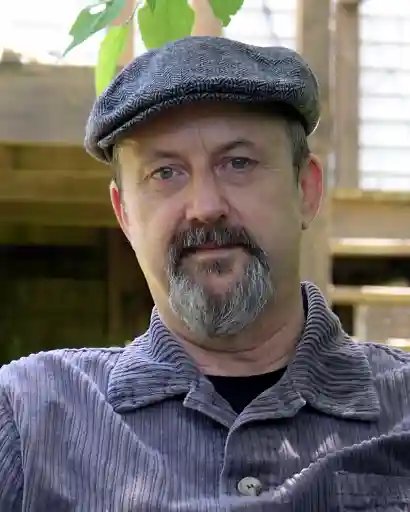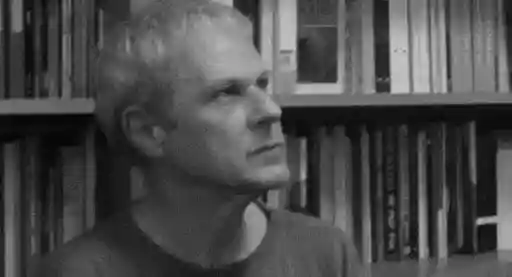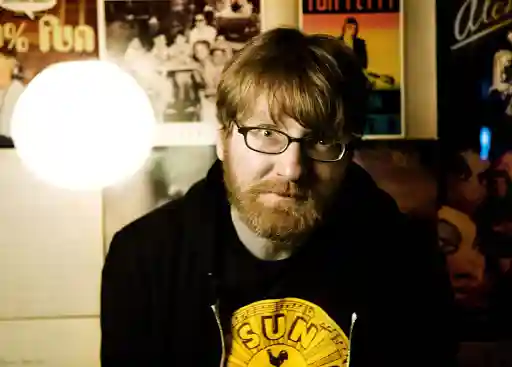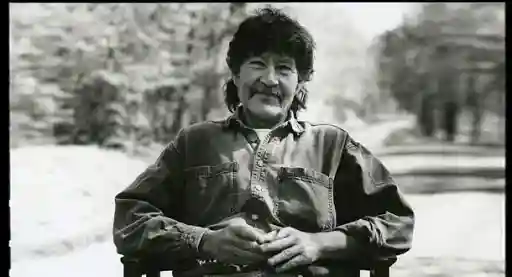Looking back on all the comics I've read, the ones that stick with me the longest are always the less mainstream books. I'm still a fan of Batman, The Avengers, X-Men and more, but it's the little guys and creator-owned titles where creativity seems to truly flourish. Writers who don't have to adhere to the history that came before them. Comics where writers can freely do what they want without having to gather for a retreat just so they can plan their book around an event or make sure they don't step on the toes of what someone else is doing. One of my current favorite ongoing books is Skullkickers, and I was lucky enough to be able to sit down with the series' creator and writer - Jim Zubkavich - to learn about how the series came about, what's next, and the rewards and struggles of running a creator-owned comic.
Jason Van Horn: For those who might not be familiar with Skullkickers, can you give a little summary about the book?
Jim Zubkavich: Skullkickers is, essentially, a Buddy Cop Movie by way of Conan the Barbarian. It’s about two monster-mashing mercenaries and their quests for money, fame and violence. It’s a black-hearted take on the kind of classic Sword & Sorcery fare I loved when I was a kid, with a few twists thrown in for good measure.
JVH: What was the genesis of Skullkickers? How did the premise come about? When you look at the bulk of comics today, the majority of them are focused on superheroes, but Skullkickers couldn't be more different. Why the decision to go the route you did?
JZ: Skullkickers started as a one-off story created for Image’s Popgun anthology. Joe Keatinge, one of the editors on Popgun (and now the writer of Glory, Brutal and Hell Yeah! at Image) wanted Chris Stevens, a really skilled friend of mine, to create a story for Popgun Volume 2. Chris wanted to do a crazy fantasy story but didn’t feel confident in coming up with an idea or writing it, so I jammed some concepts out and we rocked out a 10-page story called “Two Copper Pieces.” It wasn’t meant to be a regular series; it was just a short story for the anthology.
Erik Larsen, the Publisher at Image at that point, quite liked "Two Copper Pieces" and asked if we wanted to do more with it. From there we did another short story for Popgun Vol. 3 and I started putting together a larger story idea to pitch to Image. When Chris had to bow out due to financial and scheduling conflicts, I mothballed the bigger story, expecting it would never get made. Over a year later I met Edwin, we got rolling on it again, Eric Stephenson approved it and it’s been a great ride ever since.
JVH: The book's duo are referred to as Shorty and Baldy by fans, because the two don't have official names yet – or at least they haven't been revealed in the book – and it's one of the lingering mysteries fans want to know. The reason you've given for why they don't have names is a sound one – can you talk a little about that decision?
JZ: It started off as a joke. Since "Two Copper Pieces" was a one-off short story I figured the two didn’t need names. Their purpose and motivations would be readily apparent. When we moved into the mini-series I figured we’d make that one of the gags – that these two nameless ass-kickers roll into town, kill monsters and cause a pile of damage and then roll out, without anyone even knowing who they are. With that in mind, we made sure that the two had as much contrast as possible – size, personality, costume color, hair (or lack thereof)…all kinds of easy ways to describe them without needing their names.
When the book got extended to an ongoing series I had to decide if we were going to keep that name thing going and, as you can see with the second arc, we’re having fun teasing people about what to call them without showing our hand just yet.
The readers have embraced “Baldy” and “Shorty” and I’m okay with that.

JV: Not to spoil anything, but with the book's second arc – "Five Funerals & A Bucket of Blood" – you gave fans a bit of a swerve when it came to naming Baldy and Shorty. Was this planned from the beginning? The swerve also lends itself to several questions. For one thing, will we ever really learn Baldy and Shorty's names? Also, is the last page of issue eleven a joke for the reader, or will the reveal actually factor into the book later on?
JZ: All will be revealed, including the names of our protagonists. The last page of issue #11 is real plot material for a future issue, not just a joke. Beyond that, I can’t really say.
JVH: Skullkickers is pretty self-contained for the most part, at least when it comes to an arc-by-arc basis. Fans who have read all the books will understand callbacks and see some characters from the past, but you can pretty much pick up an arc or its trade and instantly jump in and have a good time reading it. Was this a choice that was intentional? I know in the beginning there were worries of even getting a full story told, but once the first arc was completed and work began on the second, did you see a need to change your approach to the way stories were told?
JZ: It’s intentional, absolutely. I’m working hard to maintain that balance – to keep each major adventure arc self-contained, but to also build on the previous material. I want it to be easy for people to start reading Skullkickers but also be rewarded for having it all, especially later on when the bigger plot we’re building up starts to be revealed.
JVH: Are there any plans to further expand the mythology of the book, either moving forward or going back? For instance, the first arc leaves with the reveal of a demon that doesn't seem to be completely finished with Shorty yet – will it factor in to the issues coming up? Also, will we ever see how Shorty and Baldy came together, or learn why Baldy carries a gun that he seems perfectly normal with while everyone else thinks it's a frightening piece of magic?
JZ: Absolutely. As we roll through the third story arc it’s going to become clear that the feeling of random chaos that Skullkickers has had this far isn’t random at all. As ridiculous as everything seems, unbelievably, there is a plan. The demon lord Taxthalmus will be back down the road, the gun and its origins will be revealed…they’re just two parts of a bigger puzzle. Good times ahead.
JVH: The book's third arc will be coming in 2012 – "Six Shooter on the Seven Seas." Can you give us an idea of what we can expect? Based on the way the second arc ends, we'd wager Kusia might be showing her face again- will she be joining the cast permanently?- plus some preview art revealed it's going to have a motley crew of female pirates.
JZ: The third arc is a crucial one to our bigger story. You’re correct that Kusia is joining the cast for this adventure, as will a horde of lady pirates. Beyond that - horrific creatures, swashbuckling, stormy seas, more talking animals, secrets revealed and a food fight.
JVH: This might sound strange to those who haven't read Skullkickers before, but action words (think the punch and kicks of the old Adam West Batman television series) actually play a pretty significant role and lend themselves to a lot of the humor in the book. Phrases such as "Sneaky Sprout" and "Glorious Gobble" – I'm curious about how these came to be and at what point in the writing process are these added or considered?
JZ: They actually grew out of my love of manga, weirdly enough. In many manga they have extensive onomatopoeia for things that don’t really have sound effects – sounds for tension, fear, unease and even absolute silence. I always thought that was unique and really fun, so I used something similar in Skullkickers and readers went nuts for it, so we added it to our repertoire and haven’t looked back.
If I think of a particularly good one I’ll jot it down for later use. “Property Depreciation” was originally written in a much smaller part of issue #11, but I really liked it so it ended up being upgraded to the big double page destruction sound effect.
The sound effects are written into the initial script before Edwin even starts the artwork, but more get added or they get tweaked all the way up through the lettering and proofing process.
JVH: Whose idea was it to include "activities" at the back of the comics – things like paper dolls, mazes, etc.? Is that something you plan to continue and how do you decide what kinds of things you add as little extras?
JZ: That grew organically. Image let me know that we had 3-4 pages in the back of issue #1, typically reserved for the letters page. If I didn’t use it they’d put more ads in the back. I didn’t want more ads and didn’t have any fan mail at that point, so I decided to use that space for weird stuff. We did the Q&A in issue #2 and it garnered a good response from readers/reviewers so we kept upping the ante. I brainstormed a whole bunch of them (RPG stats, recipes, the puzzles & games, pin-ups) and now it’s part of pulling together each issue.
I just brainstorm ridiculous stuff. There’s no other way to describe it. For a bunch of them I’ve put them together without even letting the Image folk, Edwin or Misty know, so the first time they know about it is when the issue is going off to press. It’s a fun surprise for everyone.
In the third arc I have some fun ideas but nothing set in stone just yet. I could see a Pirate Dictionary and some ocean maps showing up, amongst other things.
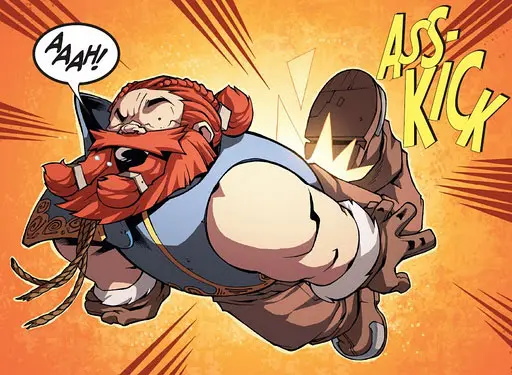
JVH: Skullkickers is a creator-owned title, which isn't always smooth sailing or an easy sell in the comic industry. What kind of struggles did you have getting your foot in the industry's door and ultimately landing the book over at Image?
JZ: Creator-owned is incredibly satisfying because all of it comes from your own will to do it, but it can be really tough keeping the pace up. We delivered 11 issues in a year and the month break between arcs was part of the schedule, so I’m incredibly proud of the team for their dedication. Just because we’re doing a humorous book doesn’t mean that we’re fooling around about making it. It’s really hard work and, especially since there isn’t a real editorial staff or the resources that other publishers have, there are a lot more hats to wear. We’re responsible for delivering the comic, so while writing the new issue I’m approving future cover art, double checking Edwin’s line art, proofing Misty’s coloring and Marshall’s lettering, laying out graphic design on the issue and marketing the book online. All while juggling a day job since Skullkickers doesn’t pay the bills. In short, it’s a whirlwind.
JVH: With long-established books like X-Men, Avengers, Batman or Superman, if you come on as a writer you pretty much do your job and that's that. You already have a built in audience. When you start your own book, however, you're starting from scratch and trying to build that fanbase up and the reputation of the book. What steps have you taken to get the book's name out there and spread the word? What kind of lessons have you learned throughout the process in regards to things that have worked or didn't work as you'd hoped?
JZ: I think a lot of people assume that press will come to you but, especially with an original property and unknown creators, you have to hunt down press yourself far more often. You have to create interest and then maintain it until the momentum builds. I’m still pushing that ball forward, even after the trade paperbacks.
Right off the bat I did a ton of research and started compiling email lists for prominent retailers, comic review websites and good press people outside of comics who cover fantasy or horror-fueled content. Each one of those contacts received an individual email tailored to their site and why I felt covering Skullkickers was a good fit. I have my own press list I use to send out advanced review copies of issues or other press releases. I have library-specific reviewers as well to try and expand interest out past just the comic book shops.
I went on a tornado-like tour of comic shops and conventions over the summer – a half dozen shop signings and 14 on-the-road shows in different cities across North America. That was my commitment during the first year of Skullkickers. Even if it didn’t pay off immediately, I figured we’d help build a focused audience of readers who were on the same page as we were. I wanted to make sure that if Skullkickers didn’t attach to the comic market that it wasn’t because I didn’t try hard enough, that I could sleep well knowing I’d done all I could to get the word out about it.
It’s a slow and constantly evolving process as I learn more and more about where good coverage can come from and how to mobilize it. It takes more time than actually writing the book, but it’s all part of my process now.
JVH: Speaking from personal experience, I follow you on Twitter (@zubkavich) and it's refreshing to actually see you interact with fans and engage them in conversations. I've shared a few tweets with you in the past as well as some other writers of creator-owned books. It seems that social networks and fan outreach is an especially crucial aspect when it comes to marketing and spreading the word about a creator-owned title. How important have you found social media in the success of Skullkickers? You're seeing it more and more with writers in other mediums too. What's your take on social networks and writers using them as a way to interact with fans?
JZ: It’s incredibly important nowadays. I make sure I’m available on Facebook, Twitter and Google+, doing all I can to answer questions and stay positive about the book. People feel good when they can interact with a creator. It’s a way to engage people all over the world without leaving your place. I’ve been able to plan shop signings with store owners, convince people to sample issues and gather a lot of online reviews thanks to Twitter, in particular.
There was a time when you could write material and put it out without personal promotion, but with all of the media flooding our brains all the time, that’s almost impossible to do now. You have to be personally invested in promoting the work if you believe in it. If it was worth creating then it better be worth promoting. Publishers aren’t just selling the product, they’re selling the creators too. Fans want to get behind people they like and support books from creators who are not just creating good work, but are also engaging and entertaining on a personal level.
JVH: I expect one of several advantages to having a creator-owned comic is you get a say in how it's used outside the realm of the comic itself. Skullkickers is taking these first steps in 2012 and branching out into the world of card games by way of Munchkin. First off, for those who might not know, what is Munchkin about? Secondly, how did the pairing of Skullkickers and Munchkin come about and why do you see it as a good fit for the Skullkickers franchise?
JZ: The Licensing agent who reps Skullkickers for media/film/games introduced me to the Steve Jackson gang at San Diego Comicon. We had a brief conversation and I felt like it was a good fit, but didn’t expect it to happen any time soon. Another meeting at Gen Con Indy went well but, again, I expected SJG would hold off until we had more comics released. A few weeks after Gen Con, their staff had all read the first trade paperback and caught up on the issues. All of them really felt it synched up well with the play style of Munchkin and just felt “right.” Steve Jackson is incredibly passionate about making great games and working with partners who are passionate about their work. Steve decided that Skullkickers was a great fit and that was that. I’m thrilled that they decided to get on board so early with us and are bringing Skullkickers on board one of their biggest franchises. It means a lot.
JVH: What can players expect with the Skullkickers Munchkin expansion? How involved were you with what actually appeared on the cards and the making of the expansion?
JZ: It’s going to be a booster pack with cards that enhance any core Munchkin set with new play opportunities. Expect to see a lot of Skullkickers-centric motifs and quite a bit of new artwork too. Steve and his team have been really committed to having me deeply involved, from card brainstorming to the names, artwork – all of it. They want it to work well with Munchkin but also feel very Skullkickers appropriate. How can you go wrong with a set that includes a card called “Kick Your Own Ass”?
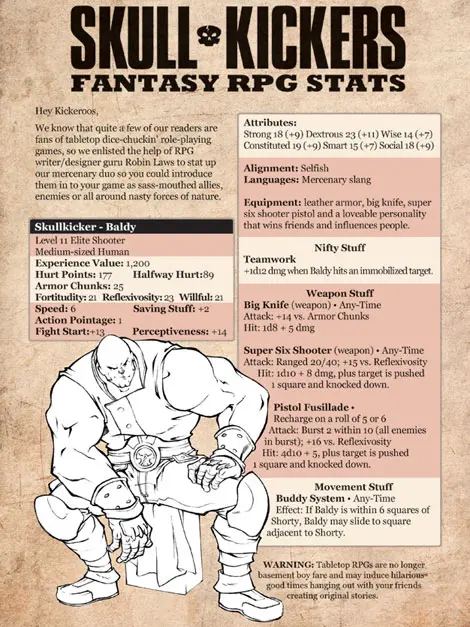
JVH: Another project you currently have going is Makeshift Miracle, which is having its ten year anniversary and seeing a re-release in a manner of speaking. What's the story of Makeshift Miracle and how it got started? The website touts it as being one of the first graphic novels to be serialized and completed online. When it was first started back in 2001, why the decision to go the route you did by publishing only a few pages a week and at the time only online on the website?
JZ: Makeshift Miracle, the original Makeshift, was a webcomic I created back in 2001 as a way to keep myself motivated to write and draw. I was working at an animation studio and worked on the webcomic in the evening, updating the site with 3 new pages per week. At the time I didn’t know anything about self-publishing, had never been to a comic convention and wasn’t sure how to format work properly for print, so starting a comic online seemed way easier and a far better way to get my work out to a wider audience, even then. It was a way for me to learn as I went and show people the progress, slowly building a story from the influences that meant a lot to me.
JVH: As I mentioned, Makeshift Miracle is celebrating its ten year anniversary and you're doing so by revisiting the series and making some changes from its original release. Can you talk about some of the changes that have been made to the graphic novel and why the decision to update it?
JZ: When Erik Ko, the head of UDON Comics, travelled to Japan and China last year on business he met Shun Hong Chan and was blown away by the beautiful atmosphere and quality of his work. When he came back from the trip he showed me samples and we both agreed that it would be great to work with Shun on a comic. Erik suggested revisiting Makeshift and expanding it and I realized that we could time it to the tenth anniversary of the original release online, so it seemed like a great fit.
I’m a much better writer than I was ten years ago, so this is a chance for me to build a bigger story and expand the world of Makeshift, really delve into it. The original story was heavily influenced by a mixture of dramatic manga and Neil Gaiman’s Sandman series, so Shun’s moody watercolor artwork enhances that feeling even more than my original drawings did.
If it goes well then the plan is to have two books, using the strongest elements from the original story and building an even bigger mythology for it. I’m really pumped about bringing this to a new generation of fans, especially now that releasing material digitally is so much more accepted.
JVH: I'm always curious about the writing process when it comes to other writers. Do you think you could talk about a normal work day or week when it comes to writing Skullkickers and about handling the business side of it as well? What's a typical workload for you or goal you set for yourself when sitting down to write?
JZ: I have two day jobs that I juggle right now, so my time is really packed. I teach Art and Animation courses at Seneca College in Toronto, which takes 3-4 days each week. I also work at the UDON studio managing Creative Services projects, putting together art teams for advertising, video game, concept and toy artwork the studio does. Those two jobs eat up a lot of time, so I don’t usually get to write Skullkickers or Makeshift until evenings or weekends. Time management is really important.
Before I start a script I generate a broad outline – story goals for the story arc, then major scene ideas for the individual issue/chapter. Sometimes I’ll then brainstorm particularly important lines of dialogue or visual concepts, things I want to make sure I don’t forget. In the case of Skullkickers I also have a checklist of things I have to include that will play into the bigger story later on.
From there I’ll do a pacing sheet – a list of the pages (usually 1-22 down the page) where I jot down what’s broadly happening on that page. When a reader reads that page, what will they remember? That helps me to identify how long each scene needs to be and make sure each scene has enough room to breathe. It also helps me plan ahead for “page turners” (reveals that happen as the reader flips the page) and double page spreads.
With all of that planned out, I start scripting, trying to clearly identify to the artist everything happening in a logical and dramatic sequence of panels bit by bit. When I’m on a roll it can go quite quickly since I have that structured pacing plan guiding me along to each new scene, reminding me of their purpose. I can still adjust things and expand/shorten scenes on the fly if I get new ideas, but if I ever start to lose my way I can go to that pacing sheet and get back on task.
That’s my process and it’s working pretty well so far. Some of the other writers I talk to are surprised at how structured I get. They assume a comedy book like Skullkickers must be chaotically written and on the fly, but it’s surprisingly organized and planned out.
JVH: So moving into 2012 we're going to see the third arc of Skullkickers and Makeshift Miracles will finish up and then be collected as a graphic novel and published. Are there already plans for more Skullkickers stories outside of the third arc and do fans have to worry about the book ending anytime relatively soon? Are there any other writing projects you're going to have coming up or are you trying to focus exclusively on Skullkickers?
JZ: There are more plans past the third arc. We may have longer breaks between arcs, as both Edwin and I have been getting offers for other freelance work, but we’re both committed to keeping Skullkickers rolling in the long run. We’ll have at least 4 arcs in total, though I’m hoping we can keep it going much longer than that.
I have another book I just finished pitching and my fingers are crossed that will happen in 2012 as well. It’s for a younger audience and I’m pumped to see it develop. Beyond that, I have concepts percolating for a horror mini-series, some supernatural espionage and a deadline-driven thriller. Over time I’m hoping to have them all released, bit by bit.
JVH: Finally, what advice would you give to a writer trying to break into the comic industry or looking to start their own creator-owned book?
JZ: Don’t try to figure out what the industry “needs.” Write something you’re passionate about. When deadlines are crushing and you don’t know if you can keep working, that inspiration will be the only way to keep pushing forward. Write the stories that you yourself have always wanted to read and then push yourself to make them as strong as possible.
Be realistic about your goals and start small - write short stories to learn structure, pacing and format. Build up your skills rather than trying to tell an epic story right off the bat.
Be social and reasonable. Beyond just the quality of the work itself, your ability to communicate and interact with other people is part of how you get your foot in the door. Take your time, make friends and work hard. Remember that everyone else in this industry is working on their own projects, their own ideas and their own goals. Yours are not going to be a priority until you prove that they’re worthy and that takes quality, time and patience.
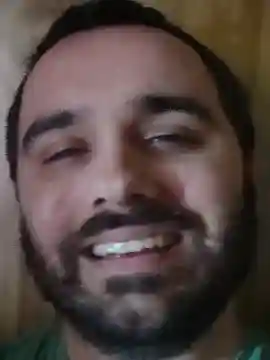
About the author
Gamer, comic junkie, film fanatic, bibliophile, and writer.

